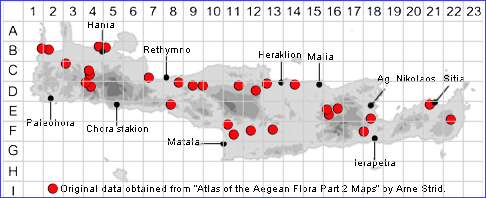
SPECIES DESCRIPTION
CENTAUREA CALCITRAPA subsp. CALCITRAPA
Family:- COMPOSITAE/Subgen. CALCITRAPA
Common Name:- Red star-thistle
Synonyms:- None
Meaning:- Centaurea (Gr) Centaur, Centauros. The centaur Chiron was cured of a
hoof wound with this plant.
Calcitrapa (L) Caltrop, Old English, calcatrippe, for plants catching on
one's feet.
General description:- Short to tall, much-branched, almost hairless, spreading
perennial.
Stems:-
1) 20-100 cm, ascending to erect, divaricately branched from the base.
Leaves:-
1) Young, leaves grey-lanate, becoming greenish and crispate-pubescent,
glandular.
2) Lower pinnatifid, with lanceolate, acute, remotely serrate lobes, withered at
anthesis.
3) Upper pinnatifid, with linear-lanceolate segments.
4) Uppermost lanceolate or somewhat hastate.
Flowers:-
1) Capitula sessile, surrounded by the upper leaves.
2) Involucre, 6-8 mm in diam, ovoid-cylindrical.
3) Bracts, coriaceous, ovate, indistinctly veined, with a scarious margin;
appendages with slender, patent apical spines 10-18 mm, strongly thickened
at the base, and usually 1-3 basal spines 3-5 mm.
4) Florets pale purple, glandular, equal.
Fruit:-
1) Achenes c. 3 mm.
2) Pappus absent.
Key features:-
1) Young leaves lanate.
2) Involucre 6-8 mm diam.
Habitat:- Roadsides, field margins, dry grassland and wasteground, generally 0-500
m. (occasionally to 1200 m.).
Distribution:- Throughout mainland Greece, Peloponnisos and Ionian Islands and
Mediterranean area casual elsewhere. Fairly scattered across Crete.
Flowering time:- May-Aug.
Photos by:- Steve Lenton
